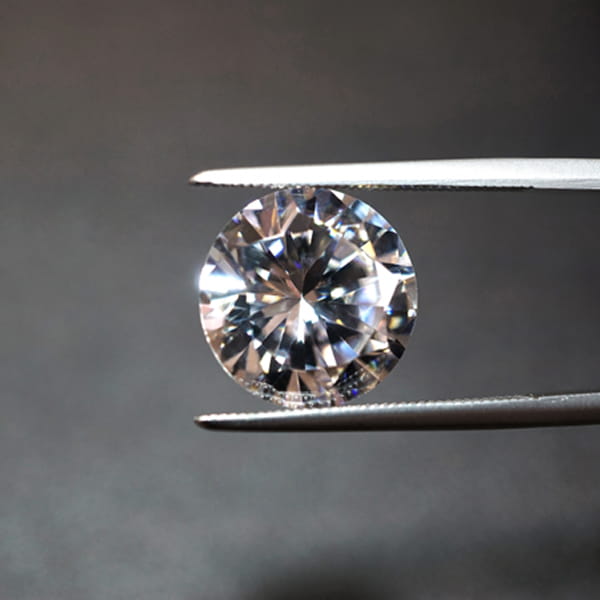Gemstones are treasured because they effortlessly fit into different settings. They are most famous in the jewellery industry. But they can also decorate plates, combs, weapons, and religious or ceremonial objects.
Once upon a time, there was nothing like lab-grown gemstones, and everyone who wore one gem or the other must have purchased it from a jewellery artisan. However, this is no longer the case today, as real gemstones can now be created from scratch in laboratories. This, in itself, is an indicator of much the gemstone industry has evolved.
What Are Gemstones?
Gemstones are minerals used to create jewellery and decorative objects. They come in different shapes, sizes, textures, and colours. Some of the most popular gemstones are diamond, emerald, pearls and sapphire. Based on origin, gemstones are classified into two: Natural gemstones and lab-grown gemstones.
What Are Natural Gemstones?
Natural gemstones originate from the earth’s crust and are produced without external influences. These gemstones take on different shapes and occur in different forms depending on the stone it is. They could be found in the earth’s mantle, along the tectonic plate subduction zone, and at Asteroid impact sites.
What Are Lab-Grown Gemstones?
Lab-grown gemstones, such as those produced by BIRON®, do not occur naturally in the earth’s crust. They are created in a controlled environment that mimics the conditions in which the earth’s crust manufactures the desired stone.


Origin of Lab-Grown Gemstones
The trend of creating gems artificially has a rich history dating back to 1797, when scientists first discovered that diamonds were essentially carbon. This led to years of research aimed at replicating the gemstone, which ultimately bore fruit in 1954. Today, these artificially created gems have gained popularity and are in high demand.
After Lavoisier and Tennent’s experiments proved that diamond was carbon, the General Electric laboratories started work in the 1940s. Due to World War II, however, the project had to be suspended for some years.
During the project, which they called “Project Superpressure”, they subjected small seed crystals to temperatures as high as 1600°C. The pressure for the projects was put to 100,000 atm. In one of their devices, they dissolved graphite, iron, nickel and cobalt. These extra metals were introduced to catalyse the transformation of graphite to diamond.
After the project, the resulting substance broke the cutting tools used. After thorough research, they discovered they had come up with a diamond. Herbert Strong, Howard Tracy Hall, and a team of other scientists were given credit for this discovery.
The Creation of Quality Lab-Made Gemstones
Even though the General Electric laboratories succeeded in making diamonds, the created stones were too small for gem use. Instead, these precious stones were used for industrial purposes. As research advanced, however, laboratories created gem-quality crystals in 1971.
The set of diamonds produced at the time contained too many inclusions and were too yellow. Hence, making it difficult for such breeds to compete with natural diamonds. After further research, the team discovered the discolouration resulted from excess Nitrogen. After further adjustments, they were able to arrive at a colourless diamond.
Since then, the production process for lab diamonds has been evolving rapidly. Many more improvements have been made, alongside new discoveries and projections for even better production procedures in the nearest future.
How Are Lab-Grown Gemstones Made?
Lab-grown gemstones are created by mirroring the processes that occur within the earth’s crust. The production of lab diamonds occurs in a controlled laboratory and often involves two distinct methods:
- High Pressure, High Temperature (HPHT)
- Chemical Vapour Deposition (CVD)
High Pressure, High Temperature (HPHT)
In this method, crystal diamond seeds are placed in carbon and exposed to high temperature and pressure. These extreme temperatures and pressure mimic the temperature and pressure below the earth’s crust. Consequent to the high temperature and pressure, the carbon breaks down, melts, and leaves a crystallized stone when it cools.
Chemical Vapour Deposition (CVD)
Chemical Vapour Deposition is a process in which a thin slice of diamond seed is used to build a bigger one. In the CVD method, a stone slice is heated in a chamber filled with carbon-rich gas at high temperatures. This chamber is usually sealed, and the temperature is high enough to break down the carbon gas. As the procedure continues, tiny layers of diamond form on the seed until it becomes a bigger stone.
Conclusion
Over the years, lab-grown gemstones have come to play a significant role in the jewellery industry. As more research is done, more efficient processes are developed to reduce costs and maximize the production process. Lab-made gemstones are cheaper, more durable, and identical to natural gemstones. Additionally, natural gemstones possess all the features and characteristics of natural gemstones. Hence, you need not break the bank to own a gemstone.
















